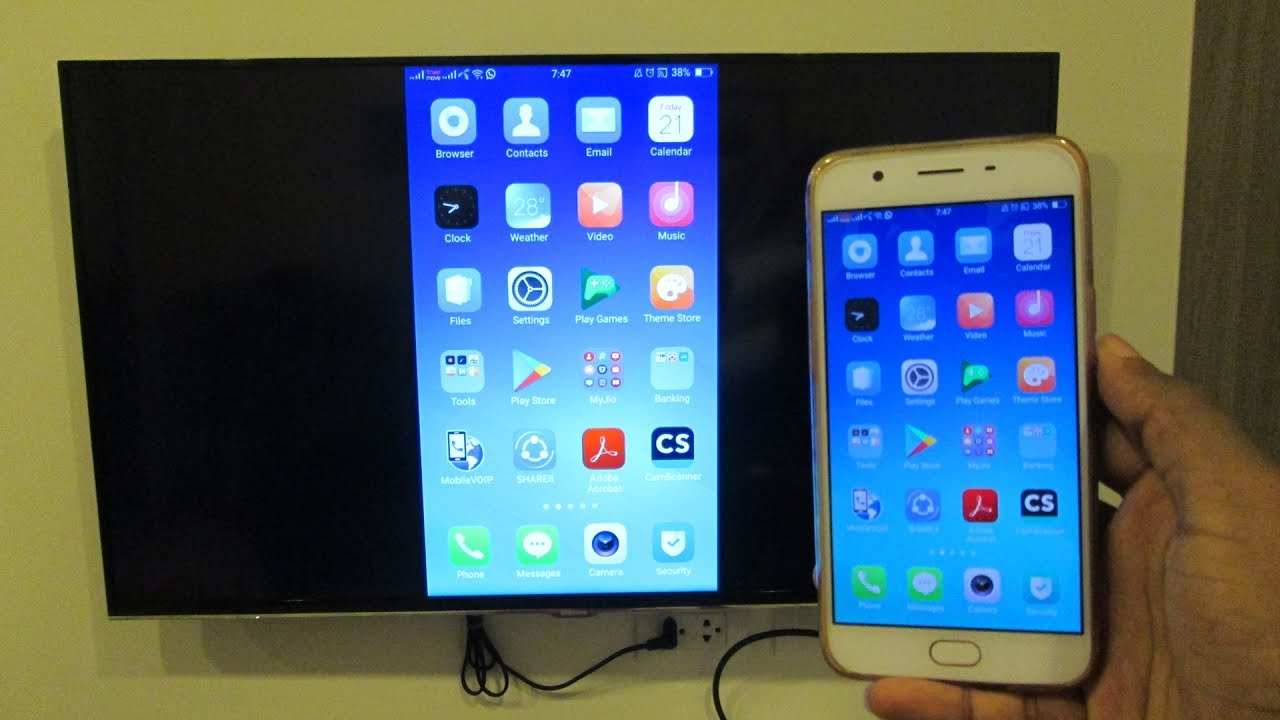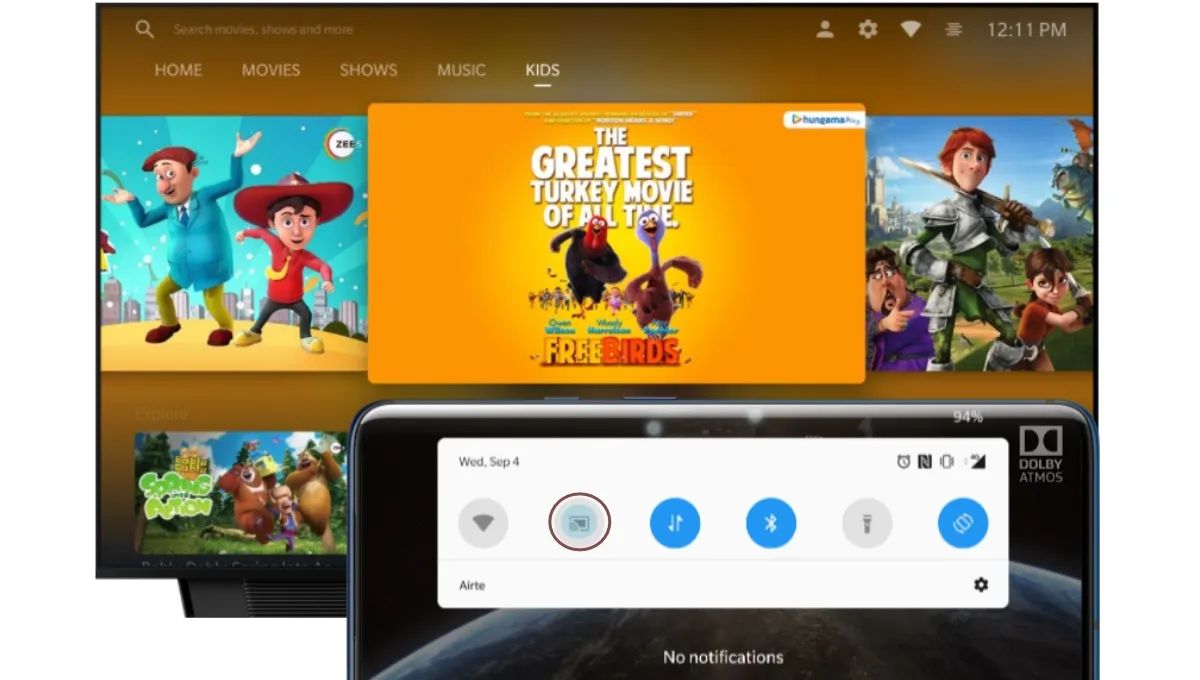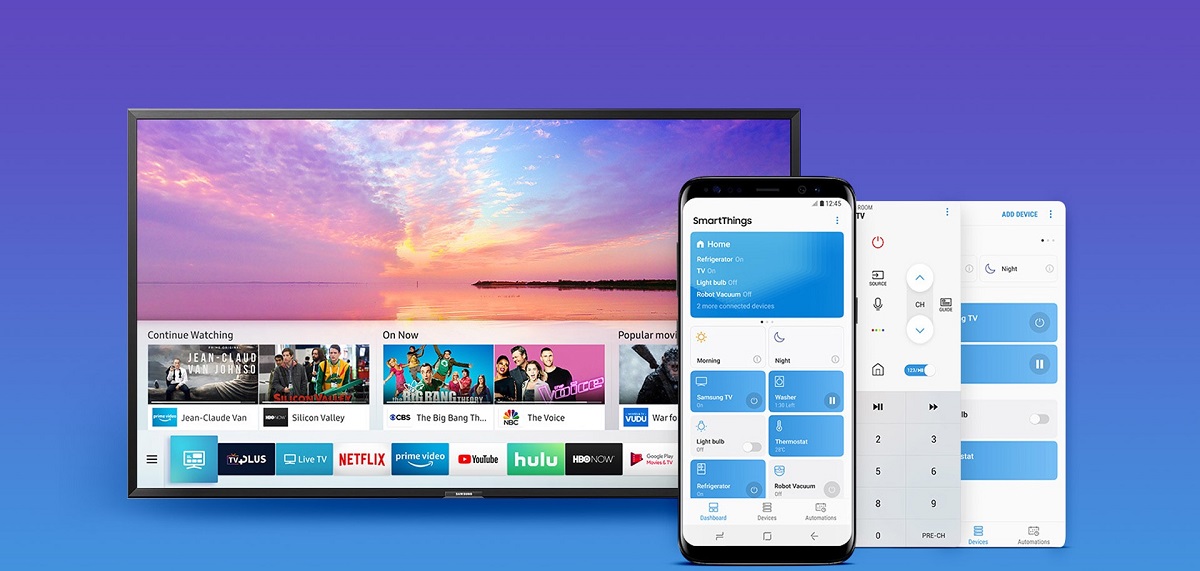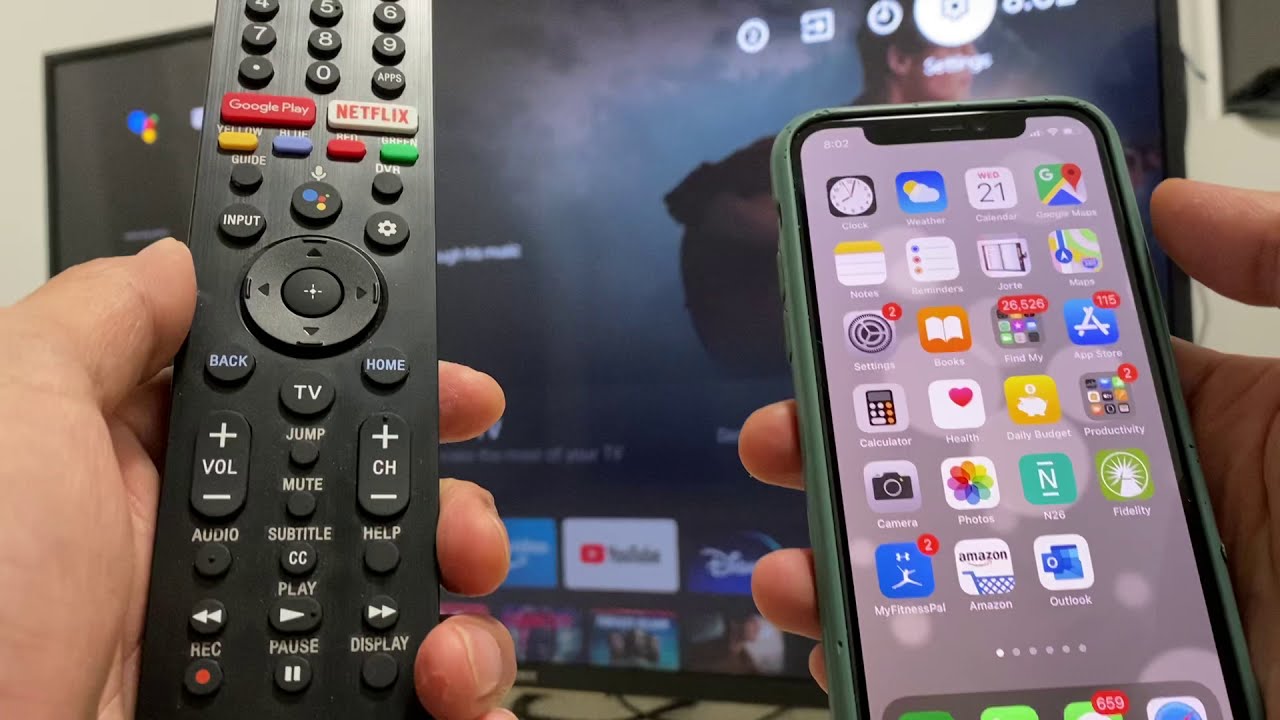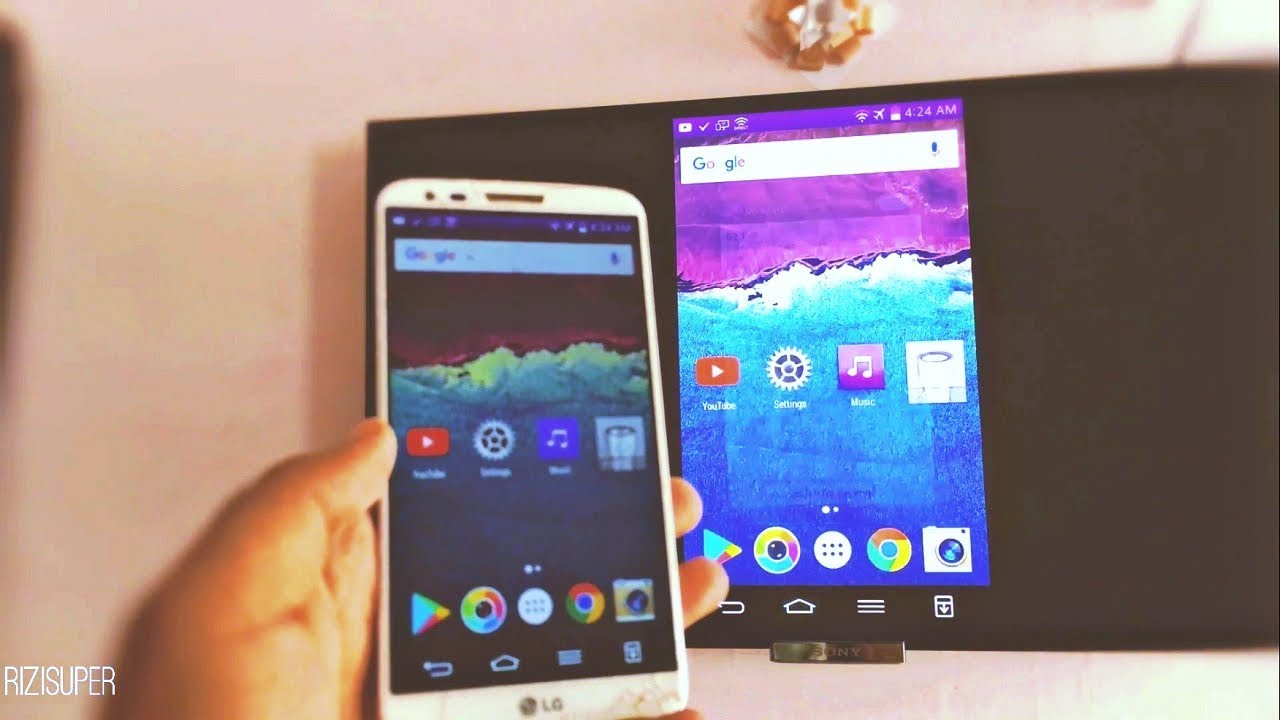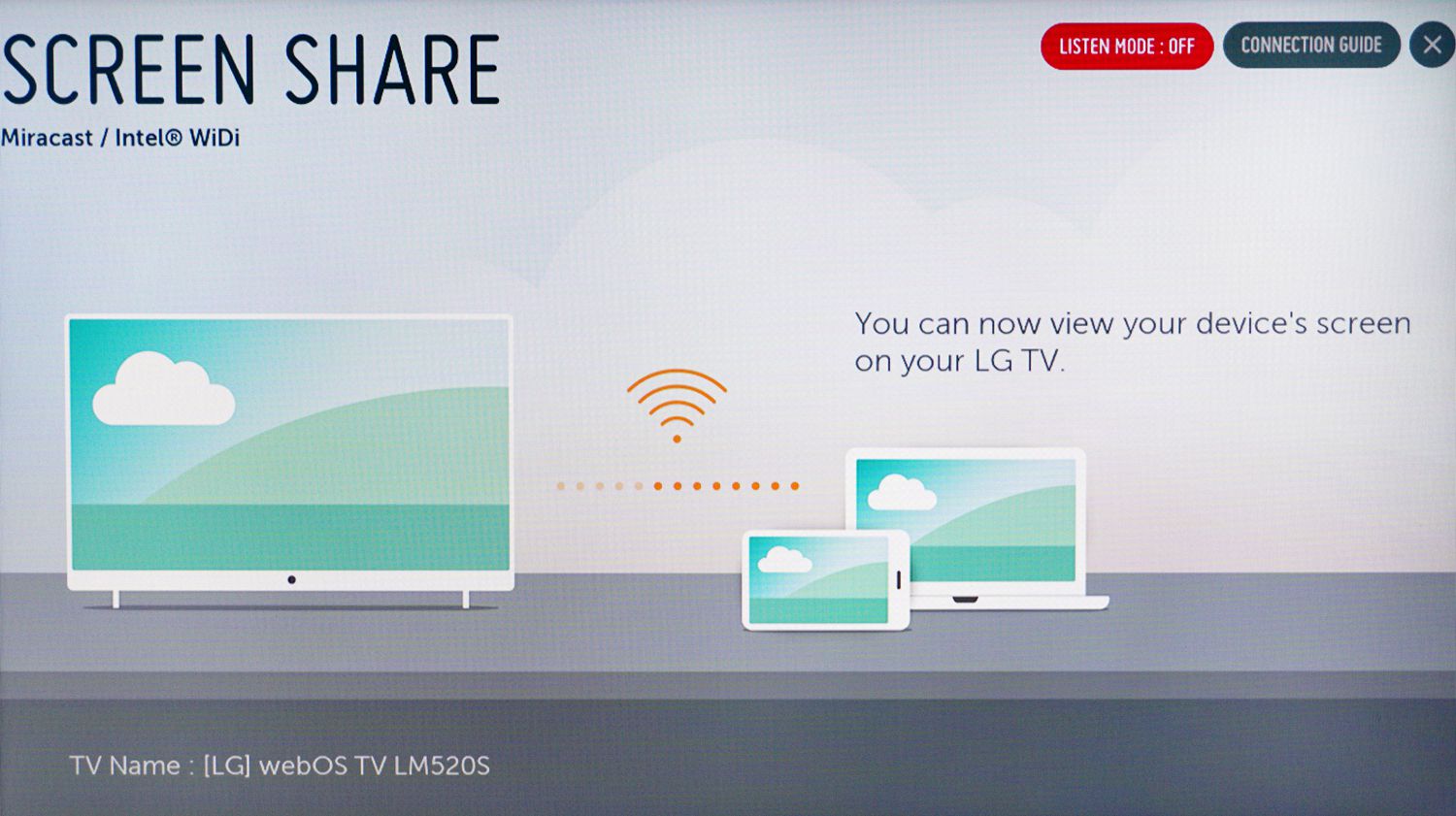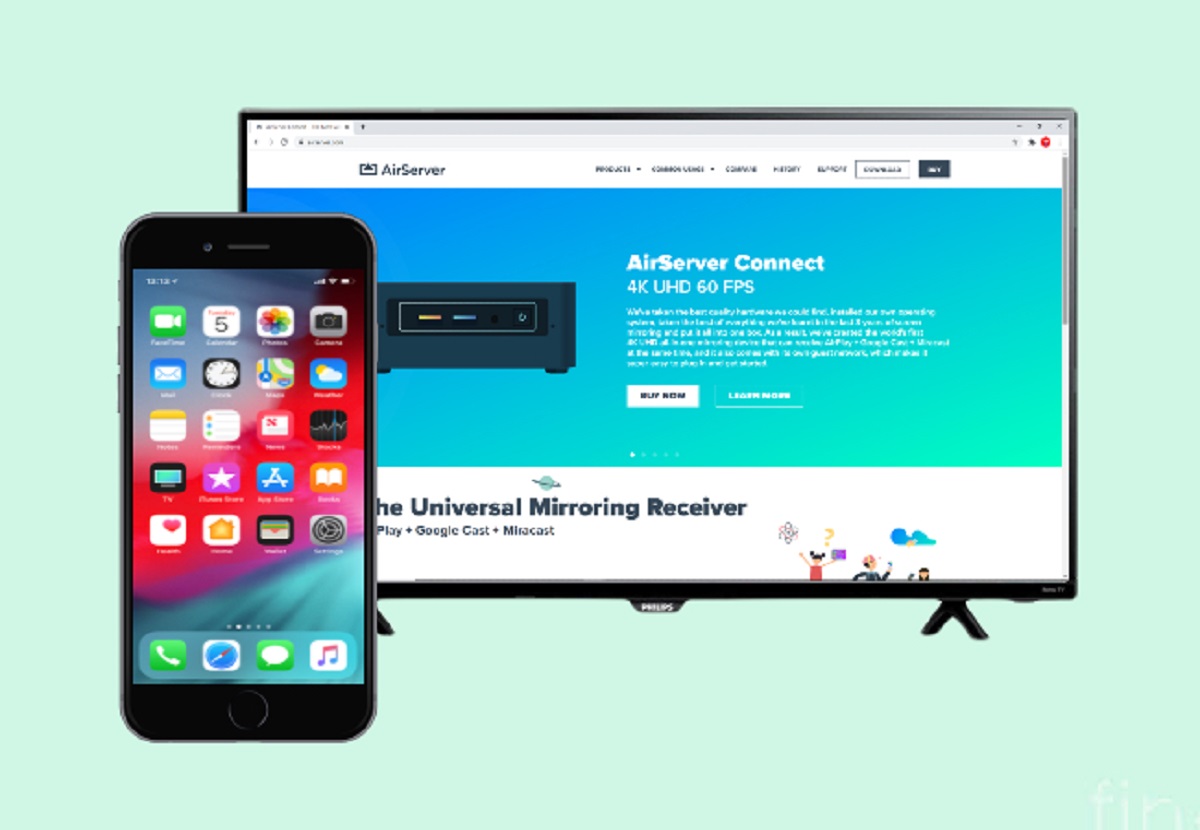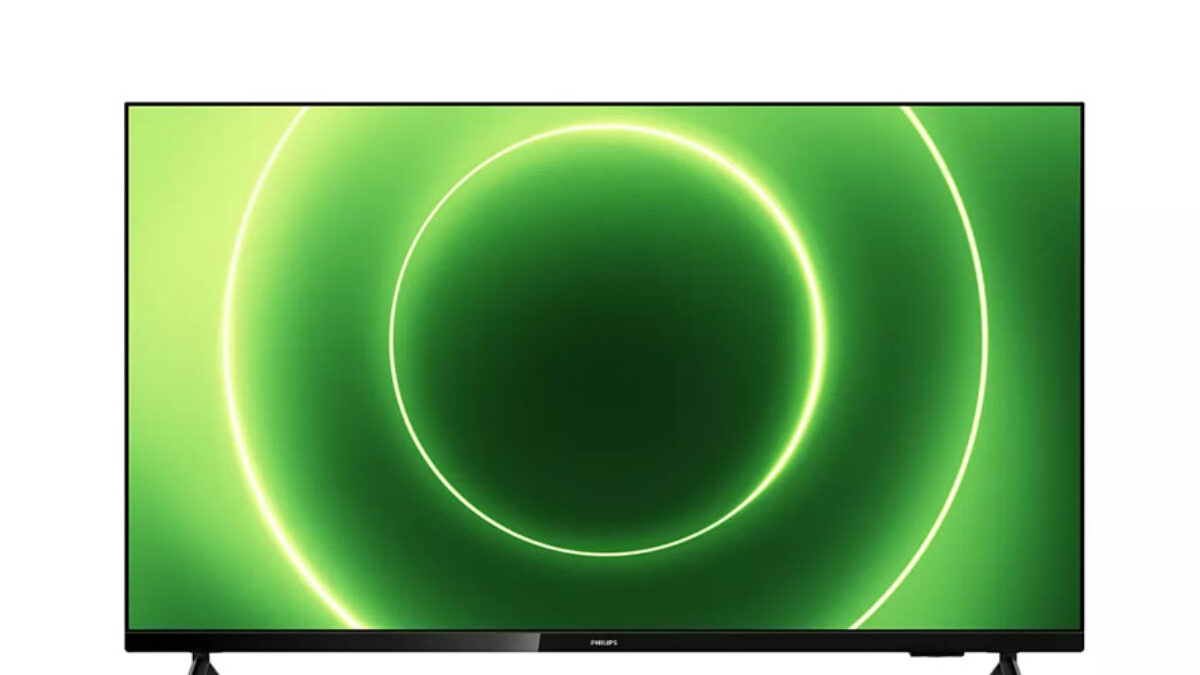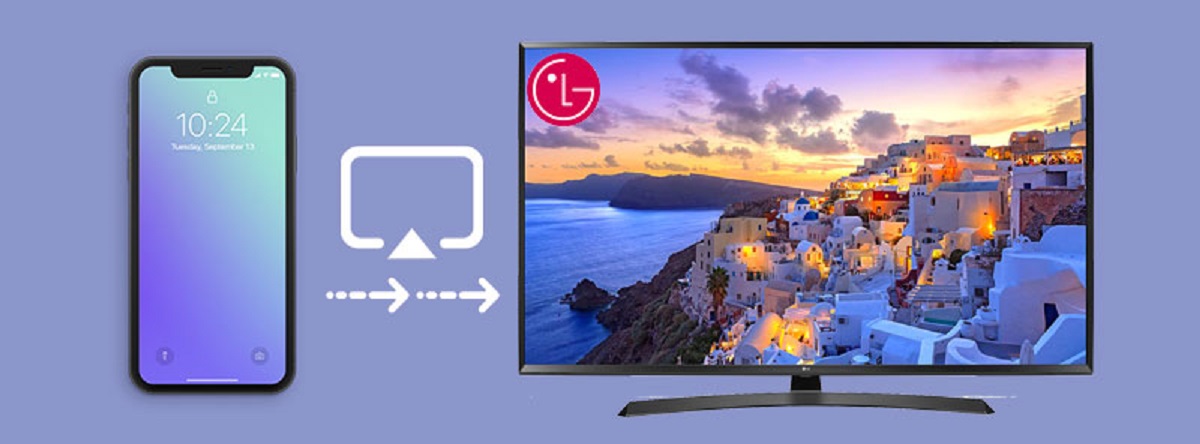Introduction
Welcome to the digital age, where smartphones have become an integral part of our lives. They serve as our communication devices, personal assistants, entertainment sources, and much more. But what if you want to enjoy the content on your phone on a larger screen? That’s where screen mirroring comes into play.
Screen mirroring is the process of displaying the exact replica of your smartphone’s screen onto a larger device, such as a smart TV. This allows you to share photos, videos, games, and apps with friends and family on a much larger and more immersive screen.
The benefits of mirroring your phone to a smart TV are numerous. It not only enhances your viewing experience but also enables you to multitask, present content in meetings, and enjoy games and video chats on a bigger screen. Additionally, it eliminates the need for cables and additional hardware, making it a convenient and hassle-free solution.
Compatibility between your phone and smart TV is a crucial factor to consider. Most modern smartphones and smart TVs come equipped with a built-in screen mirroring feature or support third-party screen mirroring apps. This ensures that you can easily connect and mirror your phone’s screen to your smart TV regardless of the brand or operating system.
In this guide, we will explore two main methods for screen mirroring: using the built-in screen mirroring feature and utilizing screen mirroring apps. We will also provide step-by-step guides for popular smart TV brands like Samsung, LG, Sony, and TCL, so you can mirror your phone’s screen with ease.
If you find yourself encountering any issues during the screen mirroring process, do not worry. We will also address some common troubleshooting solutions to help you overcome any challenges.
So, whether you want to share photos with your family, stream your favorite movies on a bigger screen, or display your presentations in a professional setting, this guide will walk you through the process of screen mirroring your phone to a smart TV.
What is Screen Mirroring?
Screen mirroring, also known as screen casting or media streaming, is a technology that allows you to mirror the display of your smartphone, tablet, or computer onto a larger screen, such as a smart TV. It essentially duplicates the content and activities from your smaller device onto the bigger screen in real-time, creating a seamless and immersive viewing experience.
With screen mirroring, you can easily share photos, videos, presentations, apps, games, and more with friends, family, or colleagues on a larger display. It enables you to showcase your content in a more engaging and accessible way, whether you’re giving a presentation, hosting a movie night, or simply enjoying your favorite streaming services.
Screen mirroring works by establishing a wireless connection between your smaller device and the smart TV. This connection allows the devices to communicate and synchronize audio and video signals, ensuring that whatever you see on your phone or tablet appears on the TV screen in real-time.
There are various methods to achieve screen mirroring, depending on the devices you have. Many modern smartphones and tablets come equipped with built-in screen mirroring functionality, allowing you to easily mirror your device’s screen onto a compatible smart TV without the need for additional apps or hardware.
Alternatively, if your device doesn’t have built-in screen mirroring capabilities or if you’re using a computer, you can utilize screen mirroring apps. These apps act as a bridge between your device and smart TV, enabling wireless screen mirroring even if your devices are not inherently compatible.
Screen mirroring opens a world of possibilities for entertainment, productivity, and collaboration. Whether you want to show off your vacation photos, watch videos on a larger screen, play games with friends, or collaborate on work projects, screen mirroring ensures that everyone can enjoy the content on a bigger and more immersive display.
Now that you have a clear understanding of what screen mirroring is and its benefits, let’s dive into the various methods and step-by-step guides to help you mirror your phone to a smart TV.
Benefits of Mirroring Your Phone to a Smart TV
Mirroring your phone to a smart TV offers a wide range of benefits that enhance your entertainment, productivity, and overall user experience. Whether you’re streaming videos, playing games, or presenting content, here are some key advantages of screen mirroring:
- Enhanced Viewing Experience: By mirroring your phone’s screen to a smart TV, you can enjoy your favorite photos, videos, and streaming content on a larger, high-resolution display. This creates a more immersive viewing experience, especially when watching movies, gaming, or viewing detailed photos and videos.
- Sharing with Friends and Family: Screen mirroring allows you to easily share your photos, videos, and other content with a larger audience. Whether you’re showcasing recent vacation pictures, sharing funny videos, or streaming a live event, mirroring your phone to a smart TV enables everyone to enjoy the content together.
- Improved Productivity: Screen mirroring is not just for entertainment purposes. It can also enhance your productivity. With the ability to mirror your phone’s screen, you can easily present slideshows, documents, or any other visual content during meetings or presentations. This makes it easier to collaborate and share ideas in a professional setting.
- Multi-tasking and Flexibility: Mirroring your phone to a smart TV allows you to use your phone for other tasks while still accessing content on the larger display. For example, you can answer messages, browse the internet, or check emails on your phone while streaming a video on the TV. This multi-tasking feature offers flexibility and convenience.
- Gaming on the Big Screen: Game enthusiasts can benefit greatly from screen mirroring. By mirroring your phone to a smart TV, you can enjoy mobile games on the big screen, providing a more immersive gaming experience. Additionally, you can use your phone as a game controller or joystick, making gameplay even more interactive.
- Video Calls on a Larger Display: Mirroring video calls to a smart TV allows you to have virtual meetings or chat with friends and family on a larger screen. This eliminates the need to huddle around a small phone screen, providing a more comfortable and engaging experience for everyone involved.
- Convenience and Simplicity: Screen mirroring offers a simple and convenient way to access and enjoy your phone’s content on a larger screen. It eliminates the need for cables and additional equipment, making it easy to set up and use. With just a few taps, you can seamlessly connect your phone to a smart TV and start mirroring.
With these benefits in mind, it’s no wonder that screen mirroring has become a popular feature for smartphone users. Whether you’re looking to entertain, collaborate, or enhance your productivity, mirroring your phone to a smart TV offers a host of advantages and opens up exciting opportunities for multimedia enjoyment.
Compatibility Between Your Phone and Smart TV
Before diving into the screen mirroring process, it’s essential to ensure compatibility between your phone and smart TV. The good news is that most modern smartphones and smart TVs are designed with screen mirroring capabilities, making it easier than ever to connect and share content between devices.
When it comes to compatibility, there are two main factors to consider: the operating system of your phone and the brand and model of your smart TV.
Operating System Compatibility:
– Android: If you have an Android smartphone or tablet, you will typically find built-in screen mirroring functionality. Android devices often use a feature called “Cast” or “Screen Share,” which allows you to wirelessly mirror your phone’s screen to a compatible smart TV. However, it’s important to note that the exact location of this feature may vary slightly depending on the device’s manufacturer and Android version.
– iOS: If you own an iPhone or iPad, Apple has its own screen mirroring technology called AirPlay. AirPlay allows you to mirror your iOS device’s screen wirelessly to an Apple TV or to select smart TVs that support AirPlay. Keep in mind that AirPlay is limited to Apple devices and is not compatible with non-Apple smart TVs.
– Windows and macOS: Computers running Windows or macOS also offer screen mirroring options. Windows devices support the “Project to a second screen” feature, while macOS devices have the built-in AirPlay functionality. Both of these options allow you to mirror your computer’s screen to a compatible smart TV.
Brand and Model Compatibility:
– Smart TV Brands: Different smart TV brands may have varying levels of compatibility with different devices. Some popular smart TV brands that support screen mirroring include Samsung, LG, Sony, TCL, and more. It’s important to check the specifications and features of your specific smart TV model to ensure it supports screen mirroring and is compatible with your phone’s operating system.
– Third-Party Apps: If your phone or smart TV doesn’t have built-in screen mirroring capabilities, you can explore third-party screen mirroring apps. These apps act as intermediaries, allowing you to mirror your phone’s screen to a smart TV regardless of their individual compatibility. Examples of screen mirroring apps include AllCast, AirServer, and Miracast.
It’s worth noting that not all smart TVs and devices are compatible with each other, even if they support screen mirroring. Ensure that you have the latest firmware or software updates installed on both your phone and smart TV to maximize compatibility.
By taking into consideration the operating system of your phone and the brand and model of your smart TV, you can ensure a seamless and successful screen mirroring experience.
Option 1: Using Built-in Screen Mirroring Feature
One of the most straightforward methods to mirror your phone to a smart TV is by utilizing the built-in screen mirroring feature available on many smartphones and smart TVs. This option allows you to wirelessly connect your phone to the smart TV without the need for additional apps or hardware.
The steps to enable screen mirroring may vary slightly depending on the brand and operating system of your phone and smart TV. However, the general process is as follows:
- Ensure that your smart TV and phone are connected to the same Wi-Fi network.
- On your smart TV, access the settings menu and look for the screen mirroring or cast option. The exact name and location may differ depending on the TV’s brand.
- On your phone, open the settings menu and search for the screen mirroring or cast option. Again, the specific name and location may vary depending on the phone’s operating system and manufacturer.
- Select your smart TV from the list of available devices on your phone’s screen mirroring menu.
- Once the connection is established, your phone’s screen will be mirrored on the smart TV, allowing you to enjoy your content on a larger display.
- To stop mirroring, simply disconnect or disable the screen mirroring function on either your phone or smart TV.
It’s important to note that the screen mirroring feature may have a different name, such as “Cast,” “Screen Share,” or “AirPlay,” depending on the brand and operating system of your devices. Additionally, some smartphones may have a quick access icon or toggle switch in the notification panel for easy access to screen mirroring.
Keep in mind that the steps provided are meant to serve as a general guideline, and the exact process may vary. It’s recommended to consult your specific device’s user manual or online support resources for detailed instructions tailored to your phone and smart TV models.
Regardless of the minor differences, utilizing the built-in screen mirroring feature offers a convenient and seamless way to mirror your phone’s screen to a smart TV. It allows you to enjoy your favorite content on a larger display without the need for additional hardware or apps. Now that you know how to mirror your phone to a smart TV using the built-in feature, let’s explore another option for screen mirroring: using dedicated screen mirroring apps.
Option 2: Using Screen Mirroring Apps
If your phone or smart TV does not have built-in screen mirroring capabilities, or if you encounter compatibility issues, don’t worry! There is still an alternative option available to you: utilizing screen mirroring apps.
Screen mirroring apps act as intermediaries, allowing you to mirror your phone’s screen to a smart TV regardless of their individual compatibility. These apps work by establishing a wireless connection between your phone and the smart TV and enabling screen sharing.
Here are the steps to mirror your phone to a smart TV using screen mirroring apps:
- First, ensure that both your phone and smart TV are connected to the same Wi-Fi network.
- On your phone, open the app store (Google Play Store for Android or App Store for iOS devices) and search for screen mirroring apps such as AllCast, AirServer, Miracast, or any other app of your choice.
- Install the selected screen mirroring app on your phone.
- Launch the app, and follow the on-screen instructions to set it up.
- On your smart TV, access the app store or any pre-installed app platform (such as LG Content Store or Samsung Smart Hub) and search for the corresponding app.
- Install the screen mirroring app on your smart TV.
- Open the screen mirroring app on both your phone and smart TV.
- On your phone’s screen mirroring app, search for available devices. Your smart TV should appear in the list of available devices.
- Select your smart TV from the list, and establish the connection.
- Once the connection is established, you can start mirroring your phone’s screen on your smart TV and enjoy your content on the bigger display.
- To stop mirroring, simply disconnect the screen mirroring function on either your phone or smart TV, or exit the screen mirroring app.
It’s important to note that the specific steps and options may vary depending on the screen mirroring app you choose and the brand and model of your phone and smart TV. The app may require additional setup or configuration to establish a successful connection.
Make sure to check the user manual or online support resources for the screen mirroring app and your specific phone and smart TV to ensure a smooth and hassle-free experience.
By utilizing screen mirroring apps, you can overcome compatibility limitations and still enjoy the benefits of mirroring your phone’s screen to a smart TV. These apps provide a convenient way to wirelessly connect your phone to a smart TV and share your content on a larger screen.
Now that you are familiar with both built-in screen mirroring and using screen mirroring apps, you can choose the method that best suits your devices and preferences.
Step-by-Step Guide to Mirror Your Phone to a Samsung Smart TV
If you own a Samsung smart TV and want to mirror your phone’s screen to it, follow these step-by-step instructions:
- Make sure that both your Samsung smart TV and your phone are connected to the same Wi-Fi network.
- On your Samsung smart TV, press the Home button on your remote to access the main menu.
- Using the directional buttons on your remote, navigate to the “Settings” option and select it.
- In the “Settings” menu, look for the “General” tab and select it.
- Scroll down and select “Network” from the options.
- Under the “Network” menu, select “Screen Mirroring.” If you have a newer Samsung smart TV model, the “Screen Mirroring” option might be labeled as “Smart View” or “Screen Share.”
- On your phone, open the notification panel by swiping down from the top of the screen.
- Look for the “Screen Mirroring” or “Smart View” icon in the quick settings section and tap it. If you cannot find the icon, swipe left or right on the list of icons to locate it.
- Your phone will scan for available devices to connect to. Select your Samsung smart TV from the list of available devices.
- Once the connection is established, your phone’s screen will be mirrored on your Samsung smart TV, allowing you to view your phone’s content on the larger screen.
- To stop mirroring, simply go back to the notification panel on your phone and tap the “Screen Mirroring” or “Smart View” icon again. You can also use the TV remote to exit the screen mirroring mode.
It is important to note that the steps provided are based on the general settings menu of Samsung smart TVs. The exact names and locations of the options may vary slightly depending on the model and firmware version of your Samsung smart TV.
By following these steps, you can easily mirror your phone’s screen to a Samsung smart TV and enjoy your favorite content on the big screen.
If you encounter any issues during the screen mirroring process, make sure that both your phone and smart TV are updated with the latest software versions, and consult your device’s user manual or online support resources for more specific troubleshooting instructions.
Step-by-Step Guide to Mirror Your Phone to a LG Smart TV
If you own an LG smart TV and want to mirror your phone’s screen to it, follow these step-by-step instructions:
- Ensure that both your LG smart TV and your phone are connected to the same Wi-Fi network.
- On your LG smart TV remote, press the “Home” button to access the main menu.
- Using the directional buttons on the remote, navigate to the “Settings” option and select it.
- In the “Settings” menu, scroll down and select “Network” from the available options.
- Under the “Network” menu, select “Screen Share” or “Miracast” depending on your LG smart TV model.
- On your phone, swipe down from the top of the screen to access the notification panel.
- Look for the “Screen Mirroring” or “Smart Share” icon in the quick settings section and tap it. Note that the icon’s name may vary depending on your phone’s manufacturer and software version.
- Your phone will scan for available devices. Select your LG smart TV from the list of detected devices.
- Once the connection is established, your phone’s screen will be mirrored on your LG smart TV, allowing you to view your phone’s content on the larger screen.
- To stop mirroring, go back to your phone’s notification panel and tap the “Screen Mirroring” or “Smart Share” icon again. You can also use the TV remote to exit the screen mirroring mode.
Please note that the steps provided are based on the general settings and functions of LG smart TVs. The exact names and locations of the options may differ slightly depending on the model and firmware version of your LG smart TV.
If you encounter any difficulties during the screen mirroring setup, ensure that your phone and LG smart TV have the latest software updates installed. You can also consult your device’s user manual or visit the manufacturer’s website for specific instructions and troubleshooting tips.
By following these steps, you can easily mirror your phone’s screen to an LG smart TV and enjoy your favorite content on a larger display. Whether you want to share photos, stream videos, or play games, screen mirroring enables you to enjoy a more immersive viewing experience.
Step-by-Step Guide to Mirror Your Phone to a Sony Smart TV
If you own a Sony smart TV and want to mirror your phone’s screen to it, follow these step-by-step instructions:
- Ensure that both your Sony smart TV and your phone are connected to the same Wi-Fi network.
- On your Sony smart TV remote, press the “Home” or “Menu” button to access the main menu.
- Using the directional buttons on the remote, navigate to the “Settings” option and select it.
- In the “Settings” menu, scroll down and select “Network” from the available options.
- Under the “Network” menu, choose “Home Network” or “Wi-Fi Direct” depending on your Sony smart TV model.
- On your phone, go to the settings menu and select the “Wi-Fi” option.
- Tap on the network name that matches your Sony smart TV’s Wi-Fi Direct or Home Network name.
- Once connected, go back to your phone’s settings and search for the “Screen Mirroring” or “Cast” option. The location and name may vary depending on your phone’s brand and operating system.
- Select your Sony smart TV from the list of available devices.
- Once the connection is established, your phone’s screen will be mirrored on your Sony smart TV, allowing you to view your phone’s content on the larger screen.
- To stop mirroring, go back to your phone’s settings and disable the “Screen Mirroring” or “Cast” option.
Please note that the steps provided are based on the general settings and functions of Sony smart TVs. The exact names and locations of the options may vary slightly depending on the model and firmware version of your Sony smart TV.
If you encounter any difficulties during the screen mirroring setup, ensure that your phone and Sony smart TV have the latest software updates installed. Additionally, refer to your device’s user manual or visit the manufacturer’s website for specific instructions and troubleshooting tips.
By following these steps, you can easily mirror your phone’s screen to a Sony smart TV, allowing you to enjoy your favorite content on a larger and more immersive display. Whether you want to share photos, watch videos, or browse the web, screen mirroring enhances your viewing experience and enables easy content sharing.
Step-by-Step Guide to Mirror Your Phone to a TCL Smart TV
If you own a TCL smart TV and want to mirror your phone’s screen to it, follow these step-by-step instructions:
- Ensure that both your TCL smart TV and your phone are connected to the same Wi-Fi network.
- On your TCL smart TV remote, press the “Home” button to access the main menu.
- Using the directional buttons on the remote, navigate to the “Settings” option and select it.
- In the “Settings” menu, scroll down and select “System” or “Advanced settings” depending on your TCL smart TV model.
- Under the “System” or “Advanced settings” menu, locate and select “Screen Mirroring.”
- On your phone, open the notification panel by swiping down from the top of the screen.
- Look for the “Screen Mirroring” or “Cast” icon in the quick settings section and tap it. Note that the icon’s name and location may vary depending on your phone’s brand and operating system.
- Your phone will scan for available devices. Select your TCL smart TV from the list of detected devices.
- Once the connection is established, your phone’s screen will be mirrored on your TCL smart TV, allowing you to view your phone’s content on the larger screen.
- To stop mirroring, go back to your phone’s notification panel and tap the “Screen Mirroring” or “Cast” icon again. You can also use the TV remote to exit the screen mirroring mode.
Please note that the steps provided are based on the general settings and functions of TCL smart TVs. The exact names and locations of the options may vary slightly depending on the model and firmware version of your TCL smart TV.
If you encounter any difficulties during the screen mirroring setup, ensure that your phone and TCL smart TV have the latest software updates installed. You can also refer to your device’s user manual or visit the manufacturer’s website for specific instructions and troubleshooting tips.
By following these steps, you can easily mirror your phone’s screen to a TCL smart TV, allowing you to enjoy your favorite content on a larger and more immersive display. Whether you want to share photos, watch videos, or stream music, screen mirroring enhances your viewing experience and makes content sharing a breeze.
Troubleshooting Common Issues with Screen Mirroring
Screen mirroring is a convenient feature that allows you to mirror your phone’s screen to a smart TV. However, like any technology, it can sometimes encounter issues. Here are some common problems you may encounter with screen mirroring and their possible solutions:
- Connection Problems: If you are unable to connect your phone to the smart TV, ensure that both devices are connected to the same Wi-Fi network. Restart your phone and smart TV, and try the connection again. Also, make sure that your phone’s screen mirroring feature is turned on and that the smart TV is in screen mirroring mode.
- Poor Quality or Lagging: If the mirrored content appears pixelated or lags, it may be due to a weak Wi-Fi signal or network congestion. Move closer to the Wi-Fi router to improve the signal strength and reduce interference. Alternatively, try switching the Wi-Fi channel or restarting your router. You can also close any unnecessary apps running in the background on your phone to improve performance.
- Incompatible Devices: If your phone and smart TV have different operating systems or do not support screen mirroring, you may encounter compatibility issues. In such cases, consider using third-party screen mirroring apps that bridge the compatibility gap between devices.
- Audio and Video Sync Issues: If you notice a delay between the audio and video during screen mirroring, try adjusting the audio sync settings on your smart TV. This setting allows you to synchronize the audio playback with the video display, ensuring a seamless viewing experience.
- Screen Size and Aspect Ratio: Depending on the resolution and aspect ratio of your phone and smart TV, you may encounter black bars or content cropping during screen mirroring. Adjust the screen resolution and aspect ratio settings on your smart TV to match the content being mirrored for an optimal viewing experience.
- App Support: Some apps on your phone may not allow screen mirroring due to copyright or compatibility restrictions. If you are unable to mirror specific apps, try using a different app or exploring screen mirroring options within the app itself.
- Device Updates: Make sure that both your phone and smart TV have the latest software updates installed. Software updates often include bug fixes and improved compatibility, enhancing the screen mirroring experience.
If you encounter any other issues during screen mirroring, consult the user manual or online support resources for your specific phone and smart TV models. Additionally, forums and online communities can provide valuable troubleshooting insights from others who may have encountered similar problems.
Remember to experiment with different solutions and be patient when troubleshooting. With some troubleshooting techniques and persistence, you can resolve common screen mirroring issues and enjoy a seamless mirroring experience.
Conclusion
Screen mirroring opens up a world of possibilities, allowing you to enjoy your phone’s content on a larger and more immersive smart TV display. Whether you want to share photos with family and friends, stream videos, engage in virtual meetings, or play games, screen mirroring provides a convenient and seamless solution.
In this guide, we explored two main methods of screen mirroring: using the built-in screen mirroring feature and utilizing screen mirroring apps. The built-in feature offers a straightforward way to mirror your phone’s screen to a smart TV without the need for additional apps or hardware. On the other hand, screen mirroring apps bridge compatibility gaps and provide a solution when your devices don’t support built-in screen mirroring.
We’ve provided detailed step-by-step guides for popular smart TV brands such as Samsung, LG, Sony, and TCL to help you mirror your phone to a smart TV. These guides outline the necessary setup and configuration steps, ensuring a smooth and successful mirroring experience.
Additionally, we covered common issues that may occur during screen mirroring and offered troubleshooting tips to help you overcome these challenges. From connection problems to audio and video sync issues, understanding and resolving these issues can ensure a seamless mirroring experience.
Remember to consult your device’s user manual, online support resources, and manufacturer’s websites for more specific instructions and troubleshooting guidance tailored to your phone and smart TV models.
By mastering the art of screen mirroring, you can elevate your entertainment, collaboration, and productivity to new heights. So, whether you’re sharing special moments with loved ones, enjoying your favorite media on a bigger screen, or presenting ideas in a professional setting, screen mirroring is a powerful tool that enhances your digital lifestyle.
With this knowledge at your disposal, go ahead and start mirroring your phone to a smart TV. Immerse yourself in the larger-than-life experience and enjoy the content you love on the big screen.







